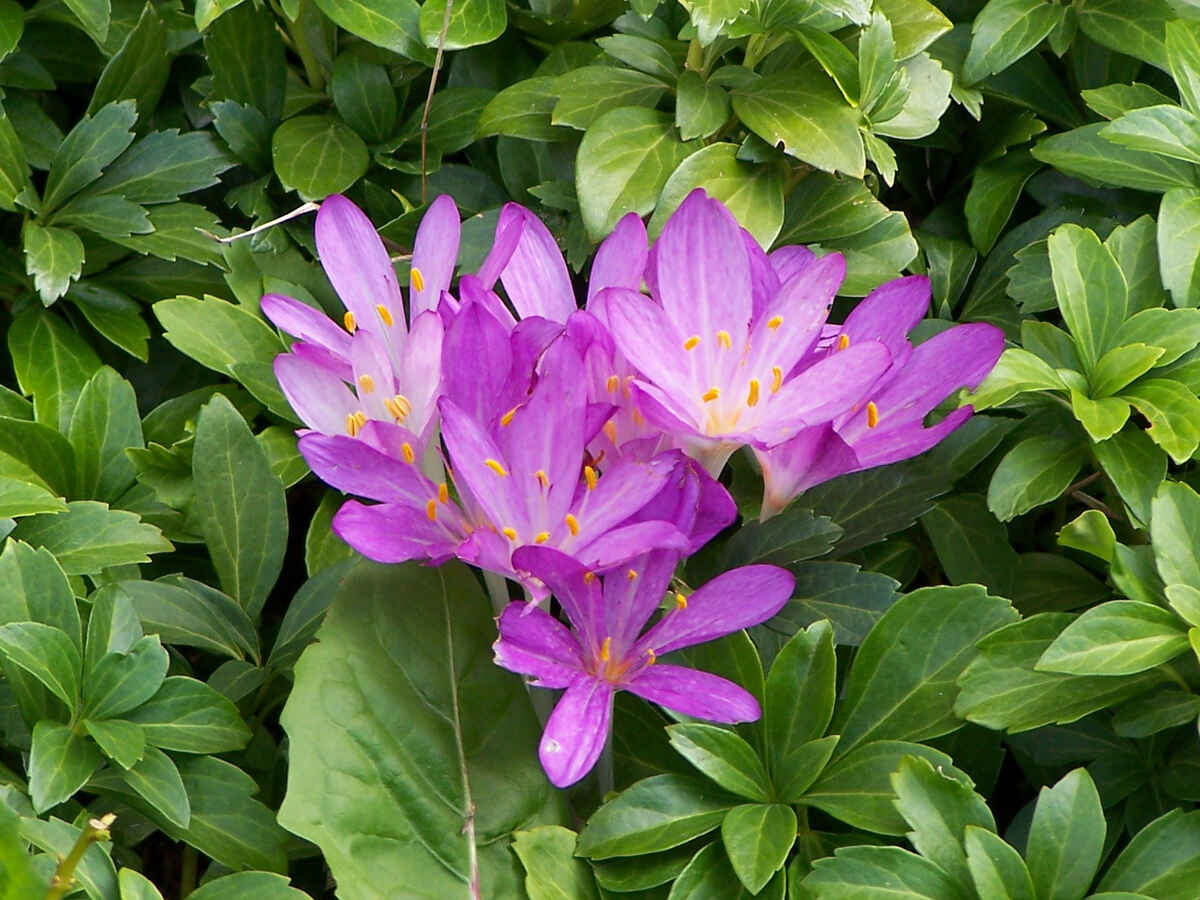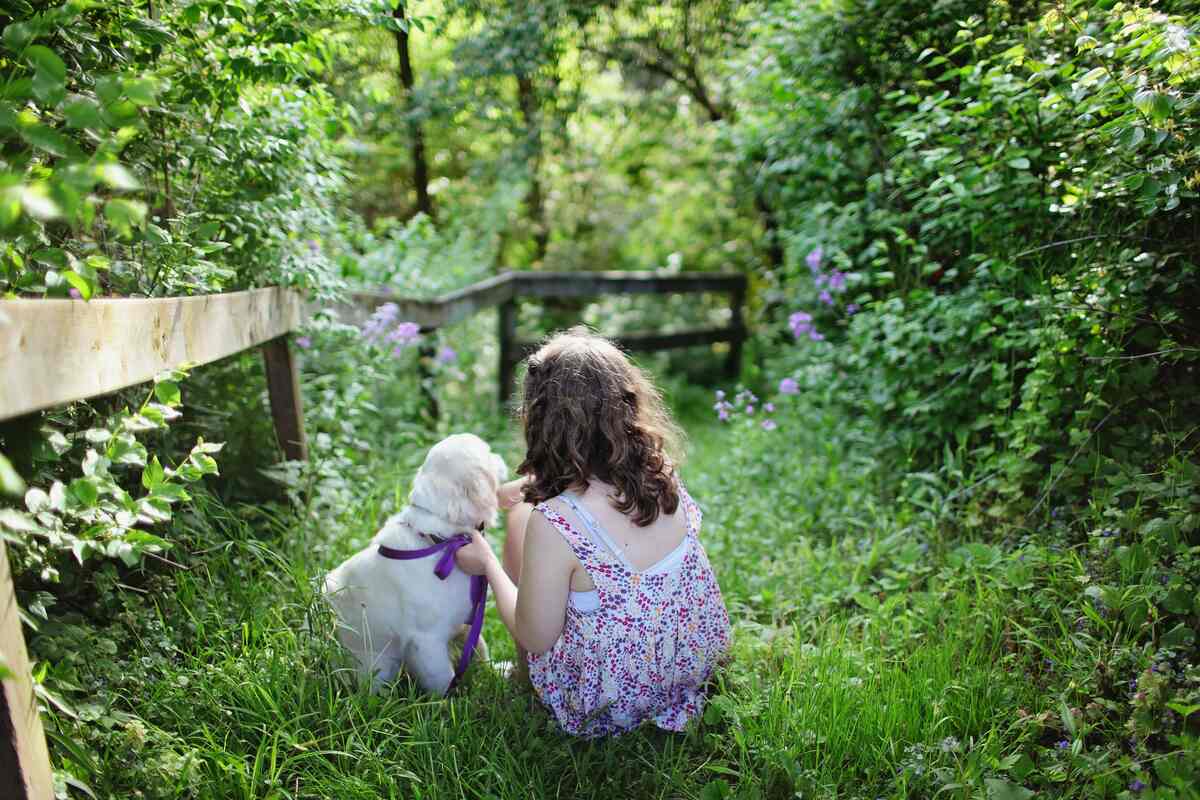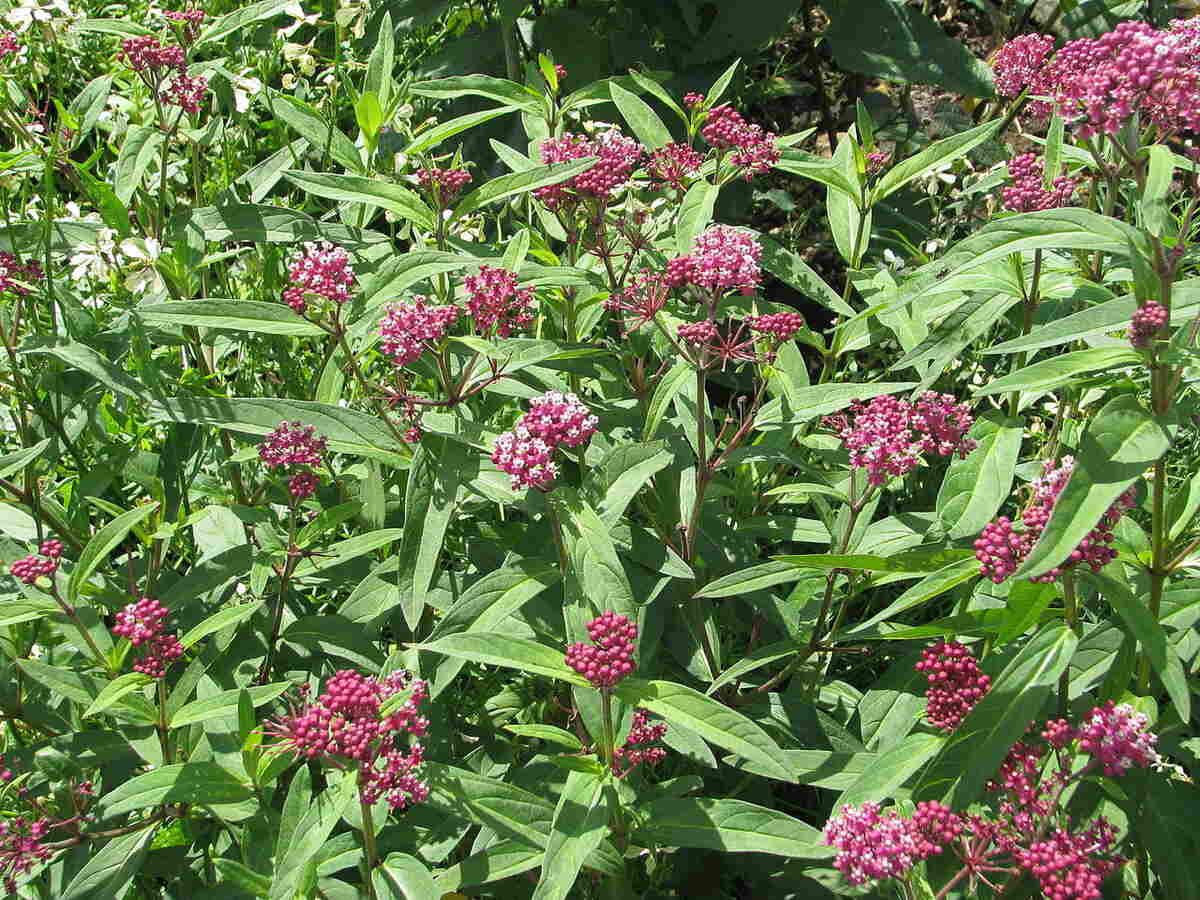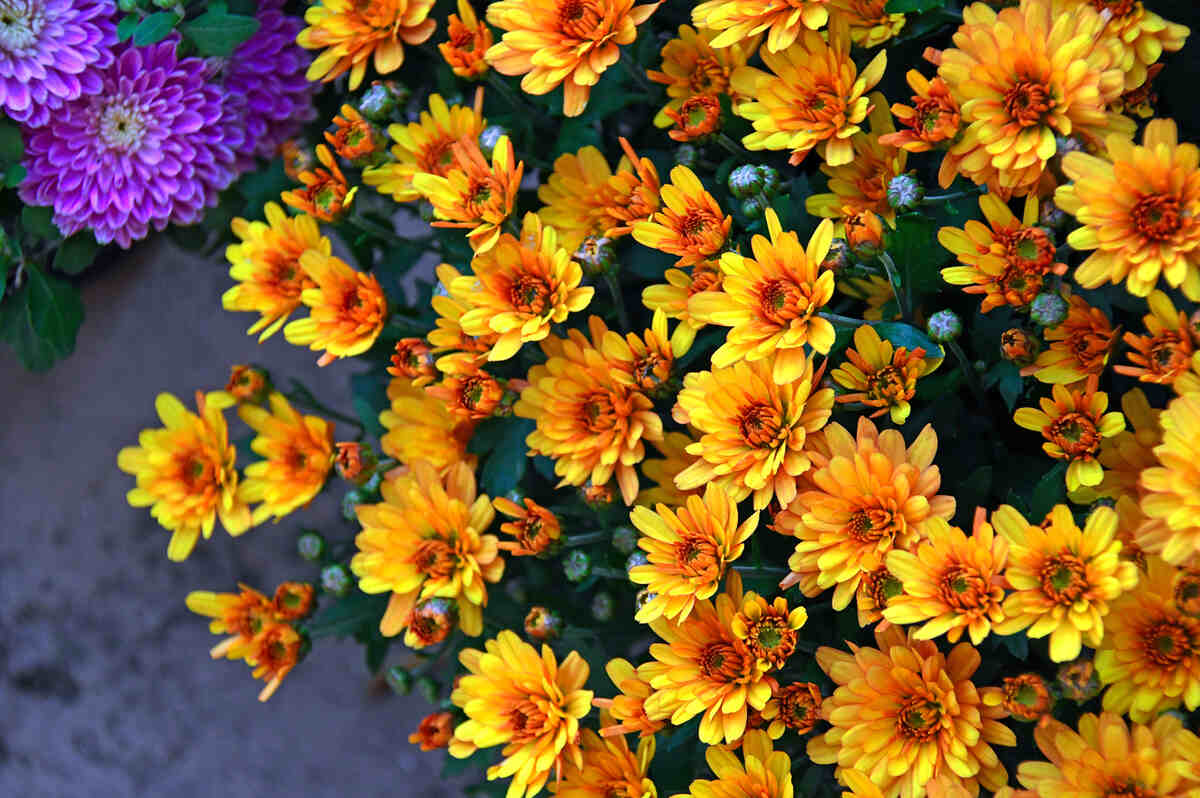
Walking your dog or leaving your BFF (best furry friend) alone in your backyard can lead to serious health issues or even death if he or she eats any of these 28 plants poisonous to dogs.
In some cases, the flowers are toxic, or the bulbs, or the leaves. With some plants, any part of the flower, tree or shrub can cause issues like liver failure, difficulty breathing, abdominal pain, and even death.
Bottom line: Some beautiful plants and some all too common plants can be deadly to your pup
And a dog made sick by a plant isn’t as rare as you might think.
The American Society for the Prevention of Cruelty to Animals (ASPCA) estimates that more than 14,000 pets are poisoned by plants in the home or environment each year. If you suspect your dog is ill from ingesting a plant, contact either your local veterinarian or the Animal Poison Control Center at 1-888.486-4435.
Now let’s take a closer look at those 28 plants poisonous to dogs (with alternative choices of flowers, shrubs and trees that are not toxic):
- 1. Rhododendron (and Other Azalea Plants)
- 2. Tulips
- 3. Daffodils
- 4. Oleander
- 5. Sago Palm
- 6. Mistletoe
- 7. Yew
- 8. Lily of the Valley
- 9. Autumn Crocus
- 10. Foxglove
- 11. Castor Bean
- 12. Chrysanthemum
- 13. Amaryllis
- 14. Hyacinth
- 15. Morning Glory
- 16. Cyclamen
- 17. English Ivy
- 18. Spotted Hemlock
- 19. Larkspur
- 20. Aloe
- 21. Hydrangea
- 22. Nightshade
- 23. Elephant Ear
- 24. Milkweed
- 25. Calla Lily
- 26. Dumb Cane
- 27. Wisteria
- 28. Rhubarb
- FAQ About Plants Poisonous to Dogs
1. Rhododendron (and Other Azalea Plants)
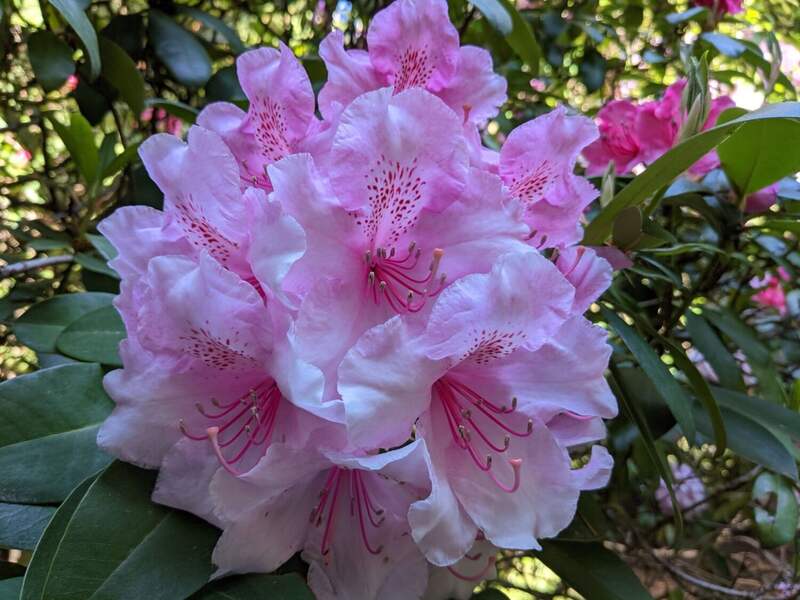
This is a case in which astounding beauty can be deadly. Rhododendrons are the showiest of spring bloomers, displaying colorful yellow, pink, purple, orange, white, or red blooms.
Rhododendrons (and other azalea plants) are highly toxic to dogs and humans. The toxins disrupt skeletal, heart, and nerve function, and effects can manifest within a few hours of consumption.
Scientific name: Rhododendron
Toxin(s): andromedotoxin, grayanotoxin
Examples of poisoning symptoms: vomiting, diarrhea, excessive drooling, appetite loss, death
Plant alternatives: Hawthorn, abelia
2. Tulips
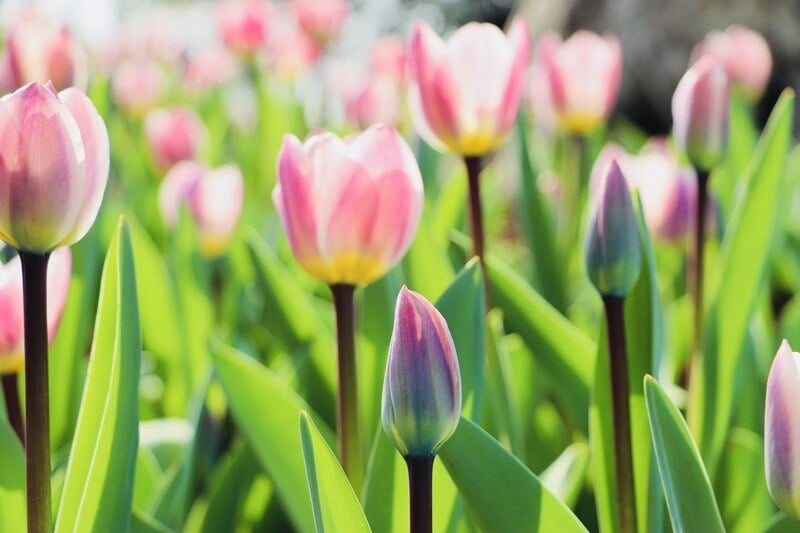
Tulips are poisonous to dogs, and that’s a shame because the colorful cup-shaped blooms are perfect for cutting or planting in containers or borders. And tulips are everywhere in springtime, so be careful when walking your dog around your neighborhood.
Toxins are present in all parts of a tulip, but the bulb has the highest concentration.
Scientific name: Tulipa
Toxin(s): Tulipalin A and B
Examples of poisoning symptoms: vomiting, diarrhea, excessive salivation, depression
Plant alternatives: quamash (camassia), lisianthus
3. Daffodils
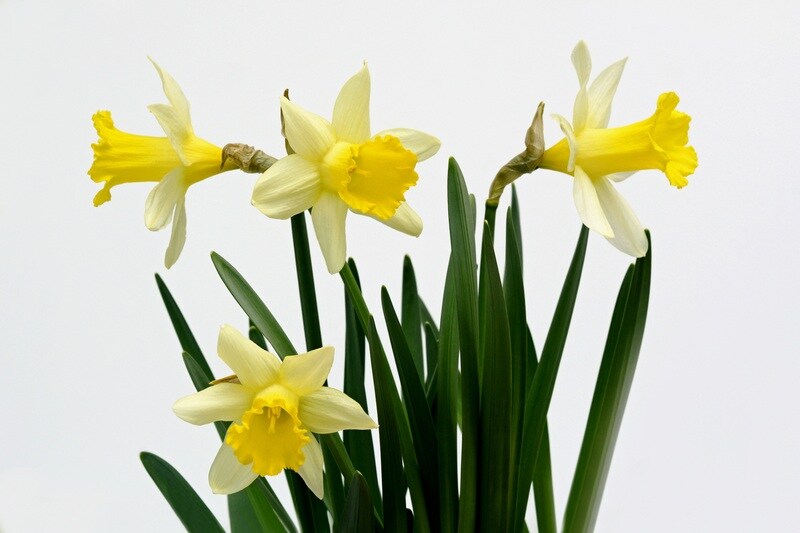
April showers bring May flowers, they say, and daffodils are some of the first signs of spring.
Unfortunately, daffodils could lead to a rushed trip to a veterinary ER.
Daffodils are poisonous to dogs. Be cautious of their flowers, leaves, roots, and bulbs; and don’t let your dog dig in your flower bed if your have daffodils. Why? Like tulips, daffodil bulbs hold the most toxicity. If ingested in large quantities, your dog may experience convulsions, low blood pressure, and cardiac arrhythmias.
Scientific name: Narcissus
Toxin(s): alkaloids like lycorine, calcium oxalate crystals
Examples of poisoning symptoms: vomiting, diarrhea, salivation, seizures, low blood pressure, cardiac arrhythmias
Plant alternatives: spring beauty (claytonia virginica)
4. Oleander
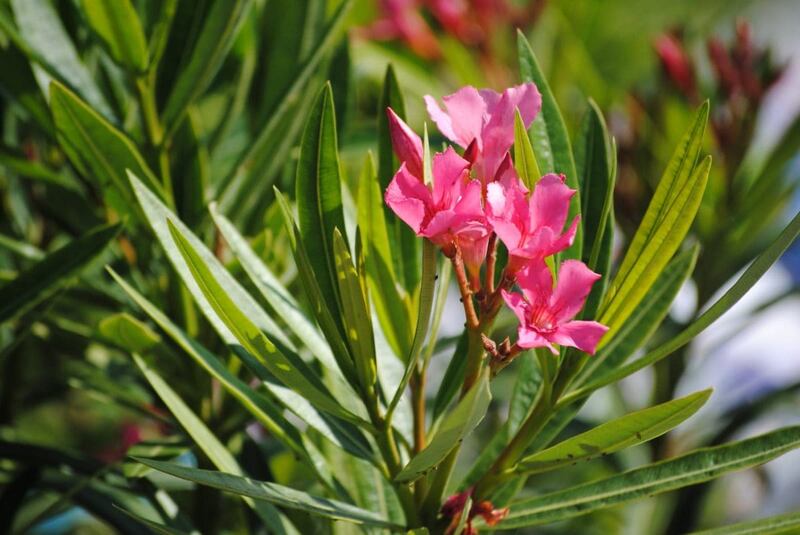
Oleander is an ornamental plant often used as a privacy screen or in foundation plantings. It’s beauty can be heart-stopping — literally.
Oleander is poisonous to dogs and humans. Toxins in all parts of the plant can produce cardiac glycosides (which can disrupt heart function) and saponins (which can destroy membranes crucial to the respiratory and digestive systems).
Scientific name: Nerium oleander
Toxin(s): cardiac glycosides, saponins
Examples of poisoning symptoms: excessive drooling, diarrhea, abdominal pain, colic, depression
Plant alternatives: Arizona rosewood, bottlebrush
5. Sago Palm
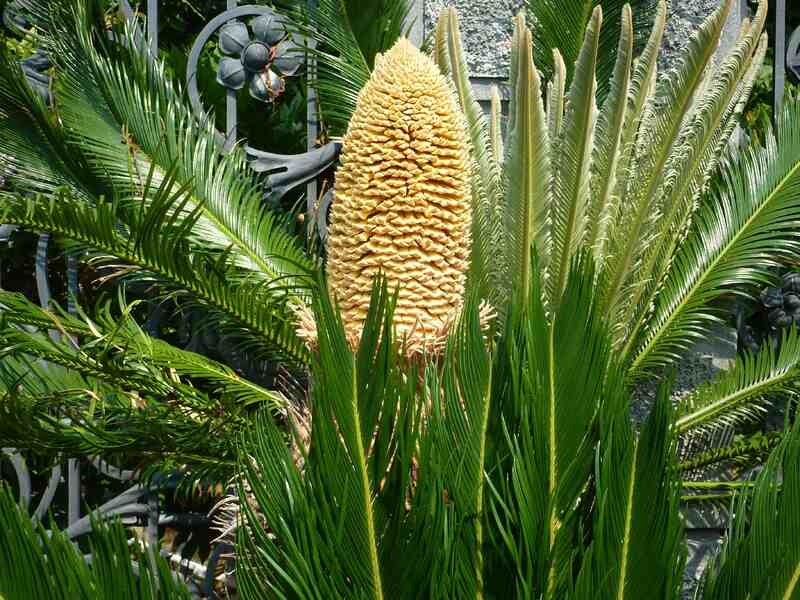
The sago palm, a tropical and subtropical evergreen widely grown as a houseplant and in border plantings, looks green, calm, and majestic.
If looks could kill, as they say…
All parts of a sago palm are toxic, but the palm seeds are most poisonous to dogs.
Scientific name: Cycas revoluta
Toxin(s): cycasin
Examples of poisoning symptoms: bloody stool, bruising, vomiting, excessive thirst, liver failure, death
Plant alternatives: windmill palm, Christmas palm, feather palm
6. Mistletoe
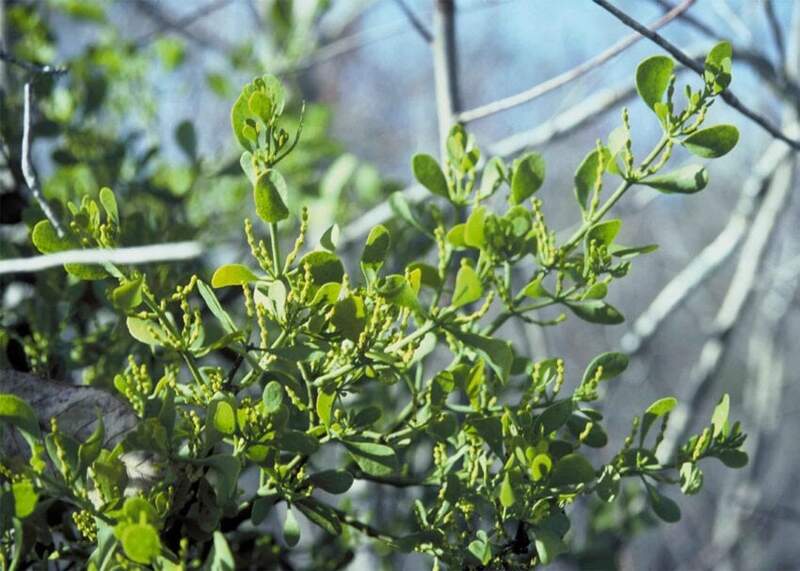
Don’t stand under the mistletoe with your beloved if Rover or Fluffy is anywhere nearby.
Here’s why: As festive as mistletoe can be during the holiday season, it can be deadly to dogs. The toxins in mistletoe’s fruit can hinder cell protein function and lead to digestive upset and neurological problems in dogs.
Scientific name: Phoradendron Leucarpum
Toxin(s): pharatoxin viscumin, amine, toxalbumin
Examples of poisoning symptoms: vomiting, diarrhea, low blood pressure, difficulty breathing, low heart rate
Plant alternatives: N/A
7. Yew
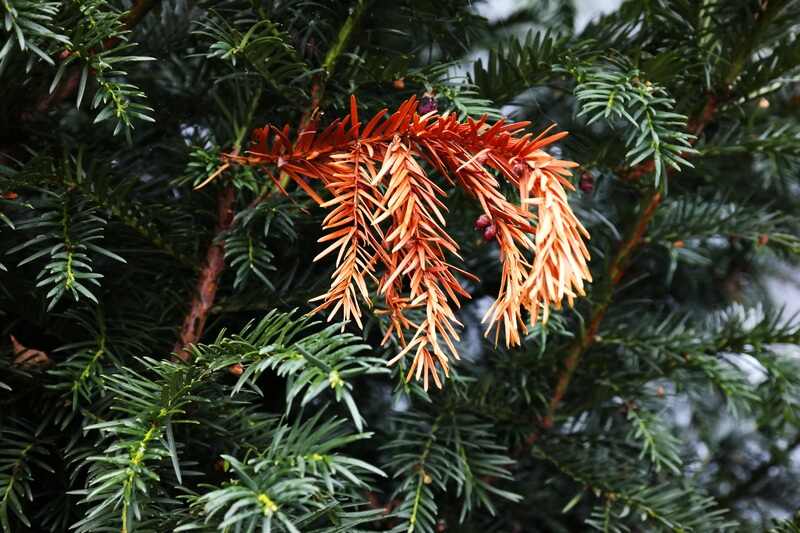
All yews are poisonous to dogs — American yew, Japanese yew, Pacific yew, and so on. All parts of the yew are toxic, including the attractive red berries, which contain toxins that can affect the heart and respiratory system.
Scientific name: Taxus
Toxin(s): taxine A and B, volatile oil
Examples of poisoning symptoms: difficulty breathing, seizures, tremors, vomiting, death
Plant alternatives: lilac bushes, woods rose, red maple tree
8. Lily of the Valley
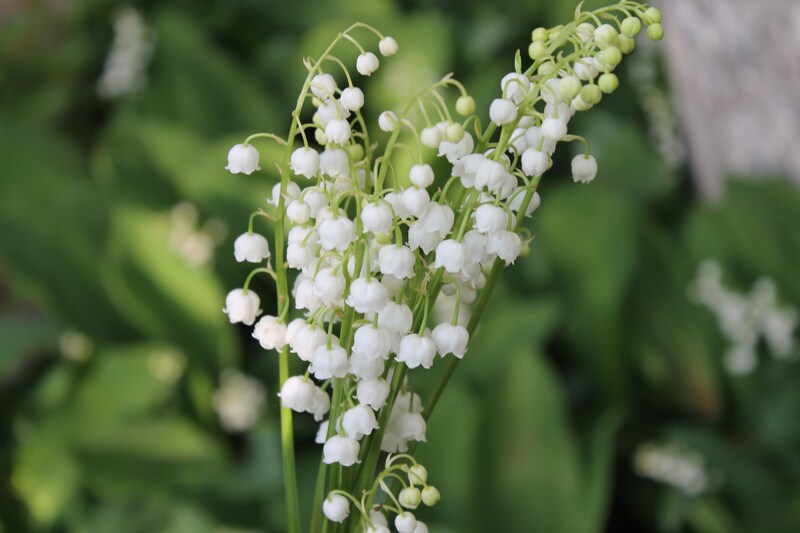
Lily of the Valley is deadly for your dog. If your dog takes a bite of these fragrant, bell-shaped blooms, it may experience gastrointestinal issues, cardiac arrhythmias, convulsions, and confusion.
Scientific name: Convallaria majalis
Toxin(s): cardiac glycosides, saponins
Examples of poisoning symptoms: vomiting, irregular heartbeat, low blood pressure, disorientation, seizures
Plant alternatives: blue bead lily, queen’s cup
9. Autumn Crocus
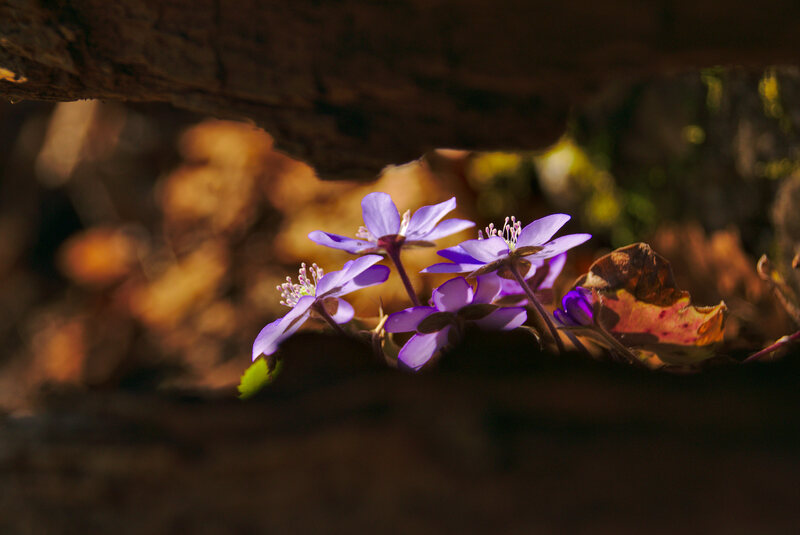
Autumn crocus is toxic to dogs. This fall-blooming perennial plant contains the toxin Colchicine. The flowers, leaves, and seeds are carriers of the toxic alkaloid that cause organ damage, intestinal issues, and respiratory failure.
Scientific name: Colchicum
Toxin(s): Alkaloid colchicine
Examples of poisoning symptoms: vomiting blood, shock, diarrhea, organ damage
Plant alternatives: N/A
10. Foxglove
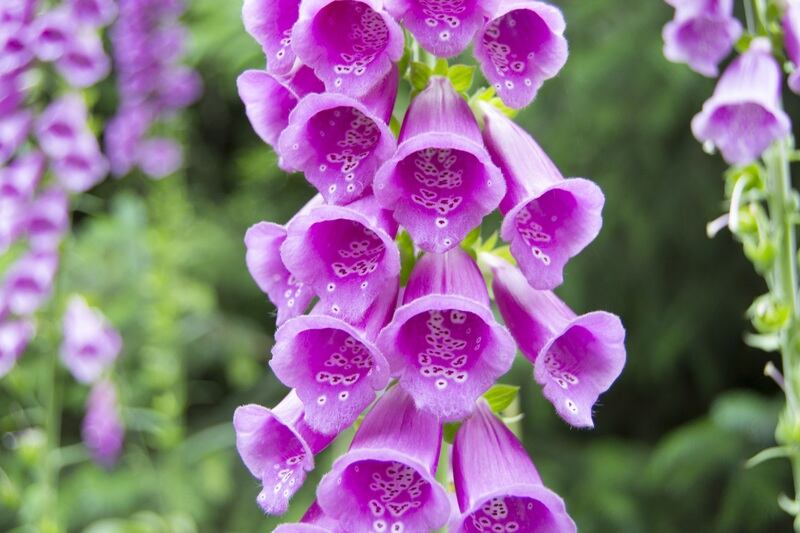
Foxglove is highly poisonous to dogs and people. The blooms, leaves, roots, and stems of foxglove, also known as Bells of Ireland, contain a toxin that can affect your dog’s.heart, as well as the digestive and nervous systems.
An easy swap for foxglove is snapdragon, which is not harmful to dogs.
Scientific name: Digitalis purpurea
Toxin(s): cardiac glycosides
Examples of poisoning symptoms: vomiting, cardiac arrhythmias, diarrhea, death
Plant alternatives: snapdragons, lilacs
11. Castor Bean
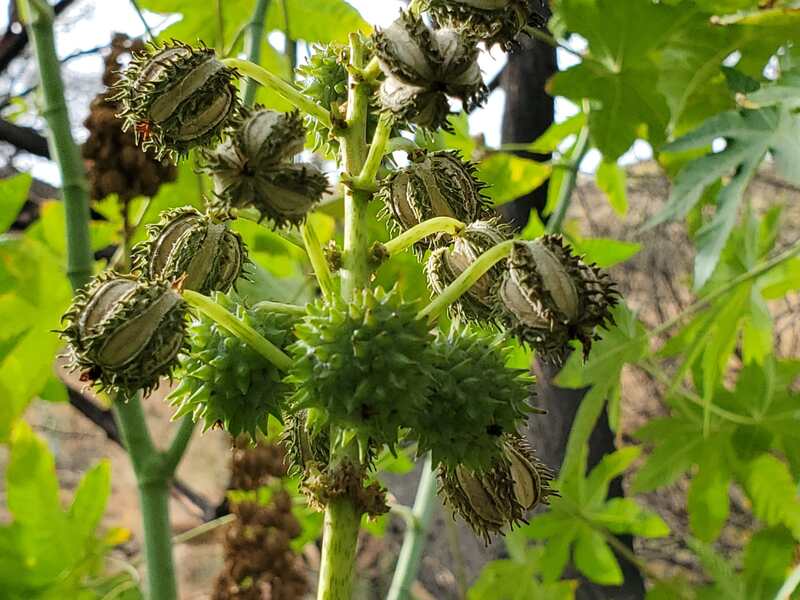
Castor bean plants are deadly to your dog — and you. All parts of the plant can cause death or serious injury. Symptoms such as loss of appetite, extreme thirst, and other more severe effects can occur within 12 to 48 hours after ingestion.
When castor beans are used to make castor oil, a natural remedy used for an array of medicinal purposes, the toxin ricin is removed.
Scientific name: Ricinus communis
Toxin(s): ricin, ricinine alkaloid
Examples of poisoning symptoms: oral burning/irritation, vomiting, diarrhea, kidney failure, coordination loss, convulsions, death
Plant alternatives: pawpaw, American beautyberry, fragrant sumac
12. Chrysanthemum
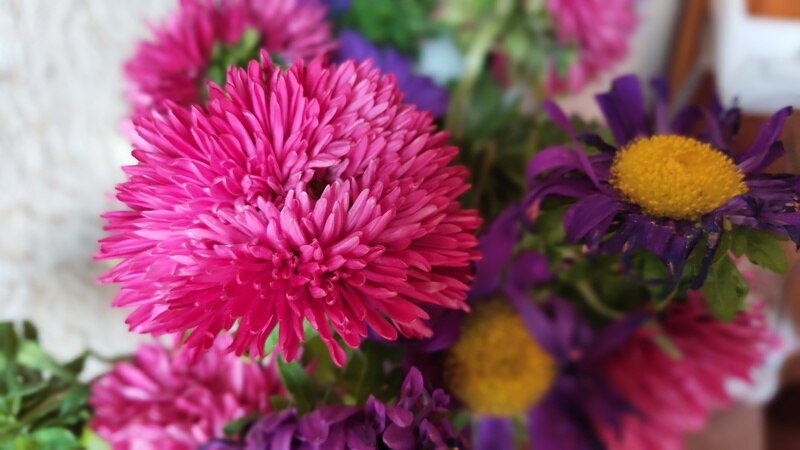
All parts of chrysanthemums, aka mums, are toxic to dogs. Mums have naturally occurring toxins that cause drooling, vomiting, and stumbling.
In fact, the naturally occurring toxins, namely pyrethrins and lactones, are key ingredients used to formulate insecticides. These toxins are found in all parts of the plant.
Scientific name: Chrysanthemum
Toxin(s): pyrethrins, sesquiterpene, lactones
Examples of poisoning symptoms: vomiting, excessive salivation, diarrhea, dermatitis
Plant alternatives: globe thistle, garden roses, asters
13. Amaryllis
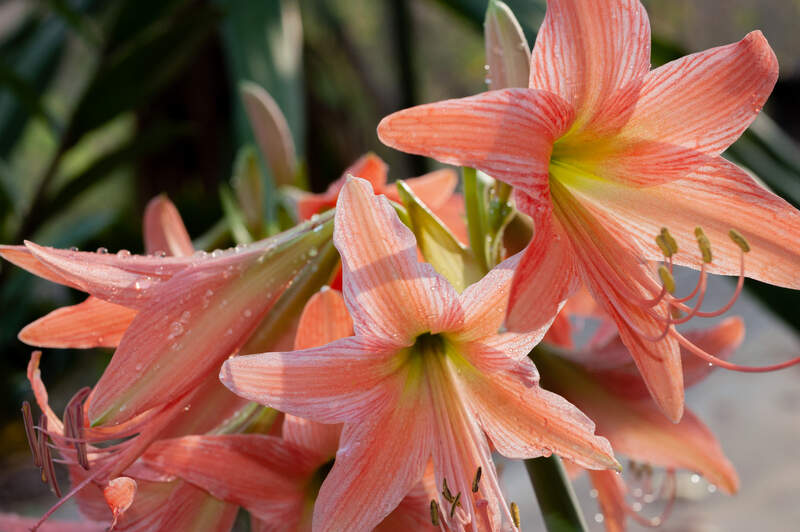
An amaryllis has beautiful blooms, but all parts of the plant, especially the bulb, are hazardous to your dog. In fact, the alkaloid in amaryllis can cause serious harm to your dog at the cellular level..
Scientific name: Amaryllis
Toxin(s): lycorine
Examples of poisoning symptoms: vomiting, depression, diarrhea, excess salivation
Plant alternatives: nerine
14. Hyacinth
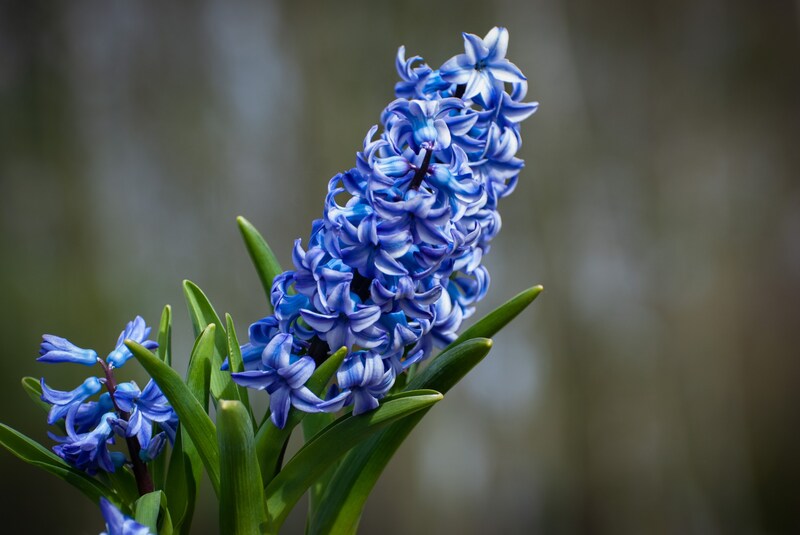
If your dog sniffs hyacinths, the fragrance can cause an asthma-like effect in your dog’s respiratory system. All parts of this plant are poisonous, with the bulbs being especially toxic.
Scientific name: Hyacinthus orientalis
Toxin(s): crystalline alkaloids like lycorine
Examples of poisoning symptoms: tremors, vomiting, diarrhea, salivation, stomach cramps
Plant alternatives: muscari (aka grape hyacinth), freesia
15. Morning Glory

Morning glory is a sight to behold, but it’s toxic to dogs. The flowers on the vine and their seeds can cause vomiting and hallucinations.
Scientific name: Ipomoea
Toxin(s): indole alkaloids, LSD
Examples of poisoning symptoms: vomiting, diarrhea, hallucinations
Plant alternatives: nasturtium
16. Cyclamen
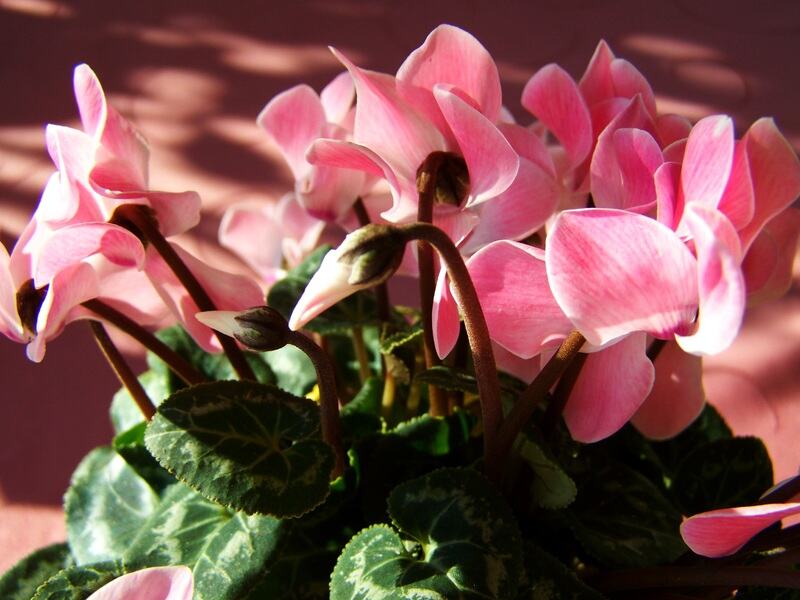
Cyclamen boasts heart-shaped or kidney-shaped leaves, but watch out –– the roots of this plant contain toxins that can harm dogs. The naturally occurring toxins are thought to act as protective substances against harmful microorganisms and herbivores.
Scientific name: Cyclamen
Toxin(s): terpenoid saponins
Examples of poisoning symptoms: salivation, vomiting, diarrhea, cardiac arrhythmias, death
Plant alternatives: N/A
17. English Ivy
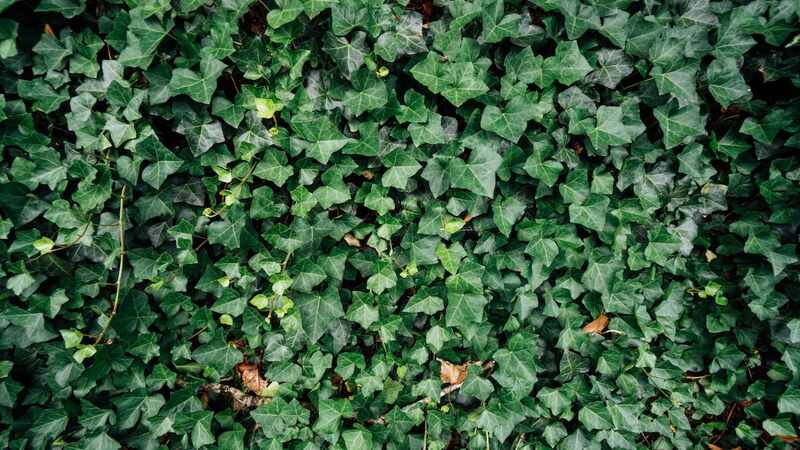
Although the berries of this evergreen vine provide food for birds, they can prove toxic to your dog. Ingestion of the berries or the more poisonous leaves doesn’t usually pose a fatal hazard, but can still cause stomach upset and hypersalivation.
Besides the berries and leaves, every other part of the plant is also toxic — from the bark and the flowers to the roots, sap, seeds, and stem.
Scientific name: Hedera helix
Toxin(s): triterpenoid saponins and polyacetylene compounds
Examples of poisoning symptoms: vomiting, excess salivation, diarrhea
Plant alternatives: bottlebrush
18. Spotted Hemlock
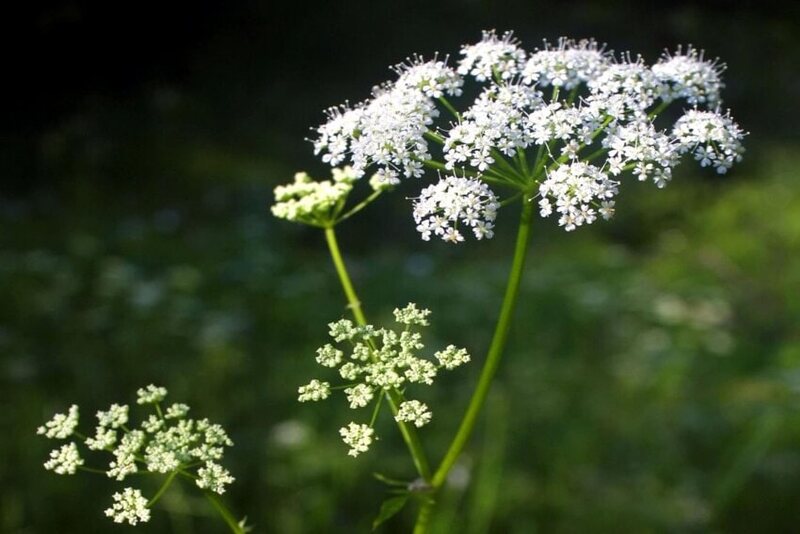
The spotted hemlock (also known as poison hemlock, California fern, and poison fool’s parsley) contains a toxin that attacks the nervous system of dogs when ingested.
Don’t confuse spotted hemlock with the hemlock tree, though. The hemlock tree is not toxic to dogs.
Scientific name: Conium maculatum
Toxin(s): multiple alkaloids like coniine
Examples of poisoning symptoms: salivation, vomiting, tremors, drooling, paralysis, death
Plant alternatives: N/A
19. Larkspur
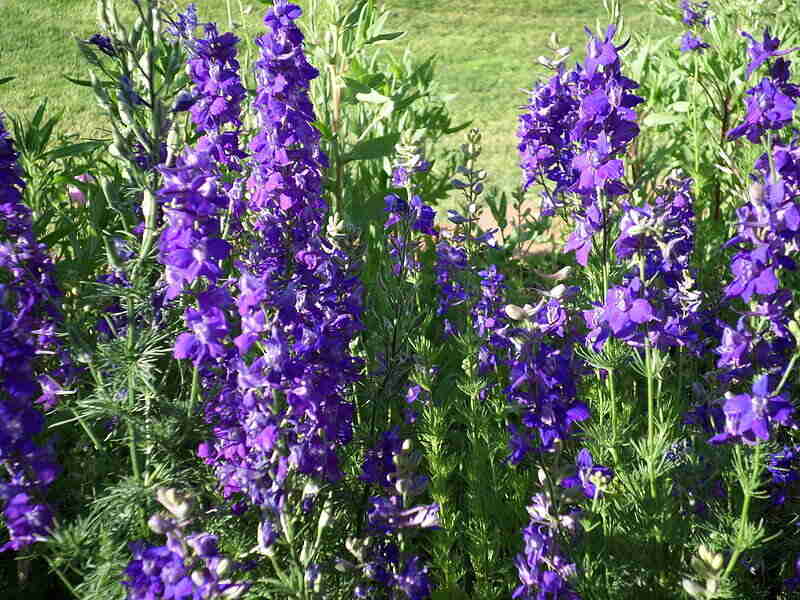
All parts of the larkspur plant are fatal if eaten by dogs or humans.
Depending on the season and age of the plant, larkspur’s toxicity can change; as it gets older, it becomes less poisonous. The plant’s alkaloids can produce neuromuscular paralysis and cause seizures, excess salivation, constipation, cardiac failure, and death.
Scientific name: Delphinium
Toxin(s): multiple alkaloids like delphinine, ajacine, and others
Examples of poisoning symptoms: excess salivation, constipation, tremors, colic, weakness
Plant alternatives: salvia nemorosa
20. Aloe
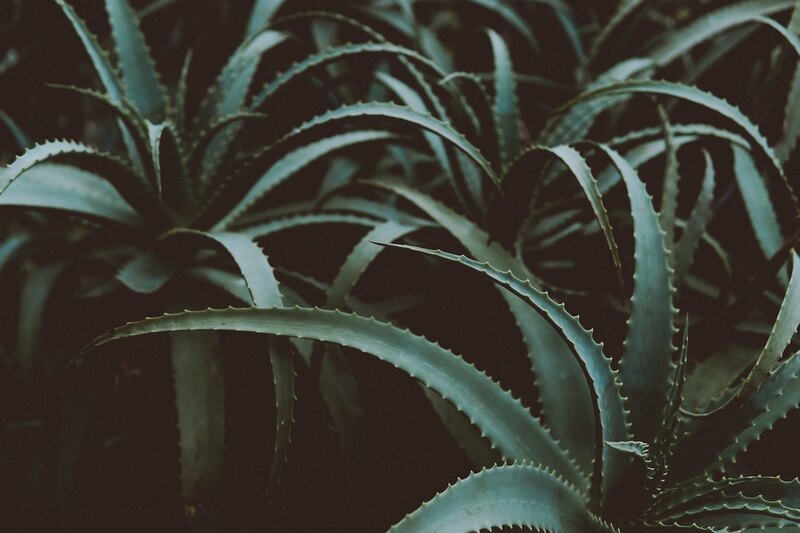
Aloe is a common houseplant known for its healing gel, but the leaves are poisonous to dogs when ingested. Keep this plant out of reach of pets because it can cause severe diarrhea, and vomiting, leading to illness.
Scientific name: Aloe vera
Toxin(s): anthraquinone glycoside
Examples of poisoning symptoms: vomiting, diarrhea, fatigue
Plant alternatives: zebra Haworthia, blushing bromeliad
21. Hydrangea
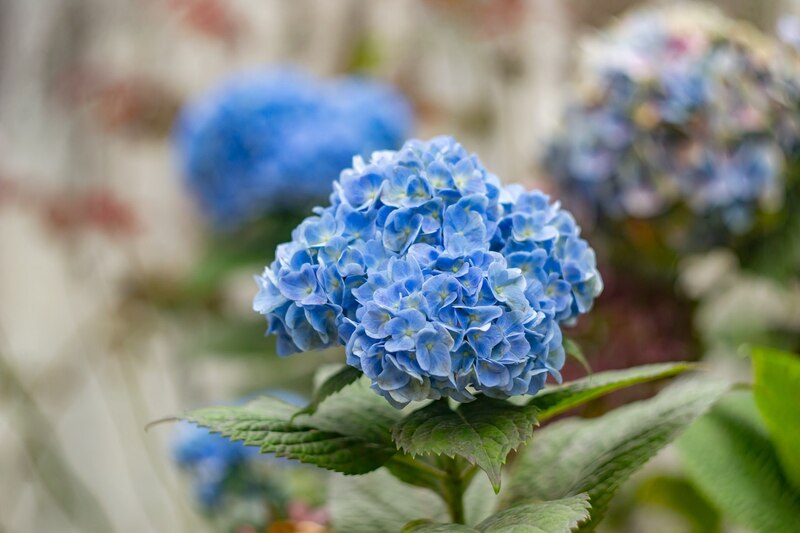
Hydrangeas are beautiful, but all parts of the plant are toxic to dogs. It’s unlikely that your dog would eat enough of this plant to be fatal, but hydrangeas produce the toxin cyanide, and even ingesting a small amount can cause stomach distress in dogs.
Scientific name: Hydrangea
Toxin(s): cyanogenic glycoside
Examples of poisoning symptoms: vomiting, depression, diarrhea
Plant alternatives: butterfly bush
22. Nightshade
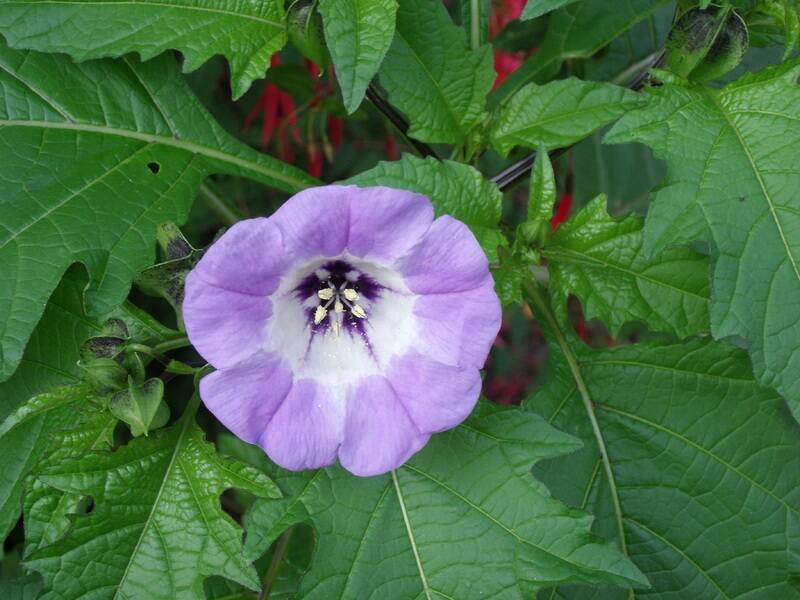
Native to many areas of the country, all parts of nightshade are poisonous to humans and dogs, but the berries and leaves are more so. The toxins nightshade generates can upset the stomach, depress the central nervous system, lower heart rate, and alter cell function.
Scientific name: Solanum americanum
Toxin(s): solanine alkaloid, saponins
Examples of poisoning symptoms: vomiting, excess salivation, diarrhea, confusion
Plant alternatives: N/A
23. Elephant Ear
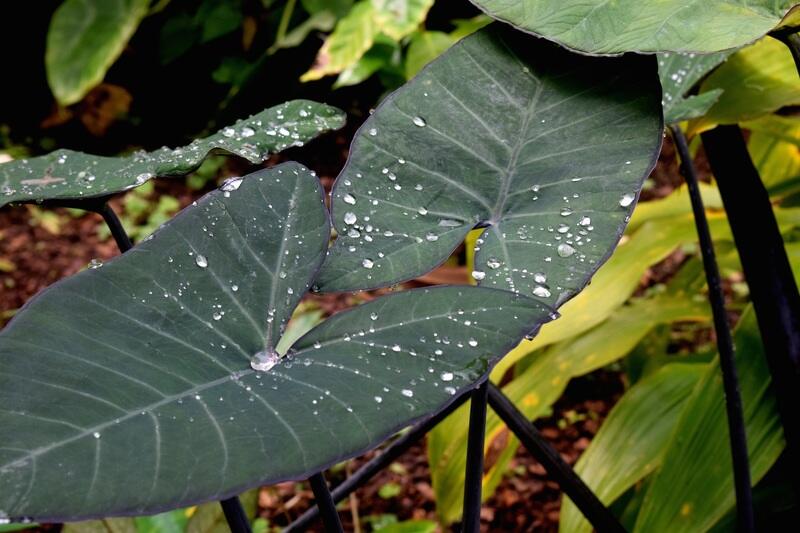
If any part of elephant’s ear (aka taro) is eaten, the calcium oxalate crystals can cause mouth problems for your pet, making this plant toxic to dogs.
Scientific name: Colocasia esculenta
Toxin(s): calcium oxalate crystals
Examples of poisoning symptoms: oral irritation/swelling, drooling, vomiting, difficulty swallowing
Plant alternatives: banana plant
24. Milkweed
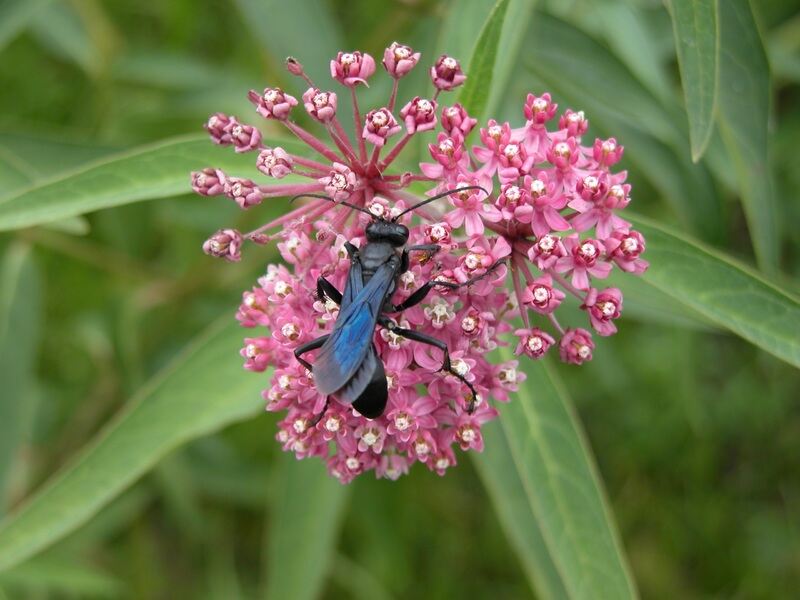
Milkweed is harmful to dogs. It would take a large amount to be fatal, but even if eaten in small amounts, milkweed’s toxins can cause stomach upset in dogs.
Scientific name: asclepias syriaca
Toxin(s): cardiac glycosides and resinoids
Examples of poisoning symptoms: vomiting, weakness, diarrhea, seizures, organ failure
Plant alternatives: California aster
25. Calla Lily
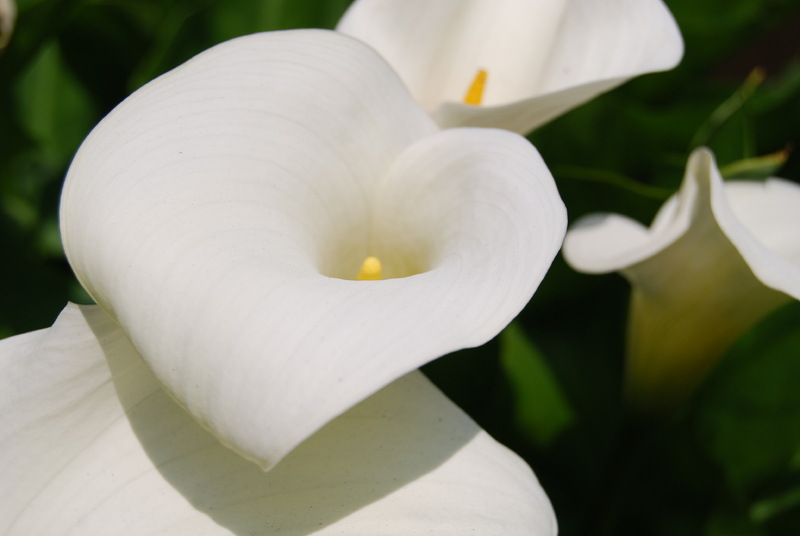
Calla lilies should carry a warning sign when it comes to your pup. Here’s why: The calcium oxalate contained in every part of a calla lily can upset a dog’s system even in low doses. Drooling and vomiting are just a few of the poisoning symptoms to look for in your dog.
Scientific name: Zantedeschia aethiopica
Toxin(s): calcium oxalate
Examples of poisoning symptoms: mouth swelling, drooling, vomiting, difficulty swallowing
Plant alternatives: bottlebrush, lisianthus
26. Dumb Cane
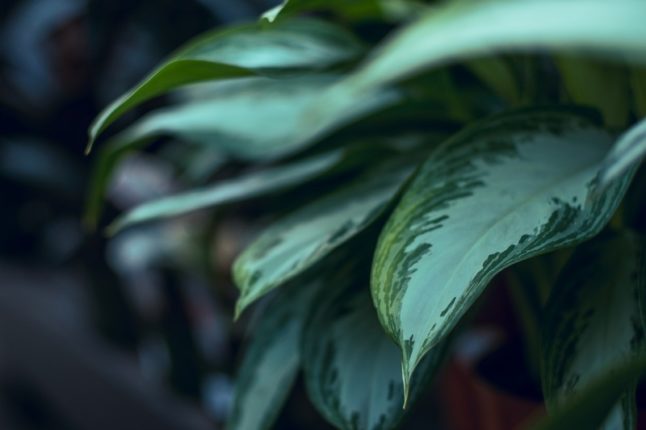
Be smart about dumb cane. This evergreen houseplant, if ingested, can cause serious oral issues in your dog. If your dog does eat dumb cane, seek emergency care right away.
Scientific name: Dieffenbachia amoena
Toxin(s): oxalic acid and asparagine, calcium oxalates, proteolytic enzyme
Examples of poisoning symptoms: inability to vocalize, mouth irritation, vomiting, drooling
Plant alternatives: cast iron plant, kentia palm
27. Wisteria
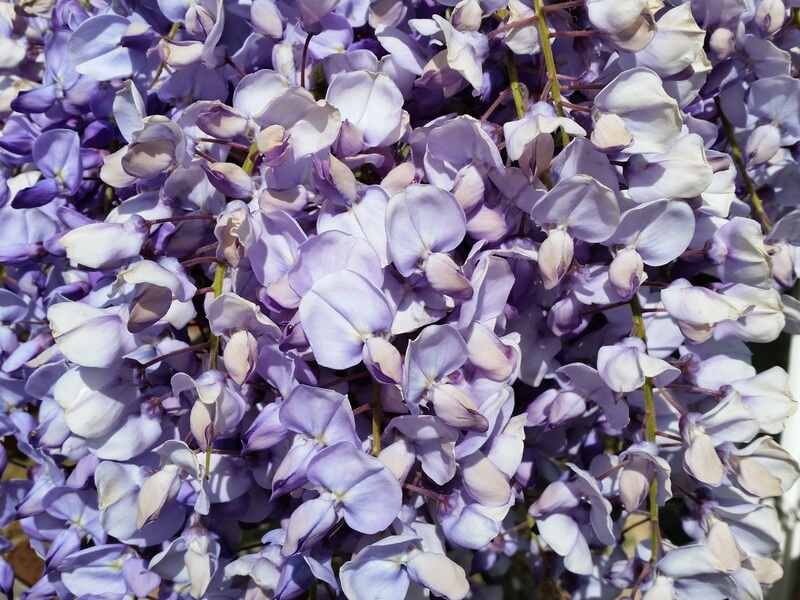
As beautiful as wisteria can be, it is toxic to your dog. A toxin called lectin can cause blood clots, which in turn may lead to strokes, and its wisteria glycoside can cause stomach issues, which may lead to dehydration and possibly death for dogs.
Scientific name: wisteria
Toxin(s): lectin, wisterin glycoside
Examples of poisoning symptoms: vomiting, diarrhea, abdominal pain, depression
Plant alternatives: climbing roses, true jasmine
28. Rhubarb
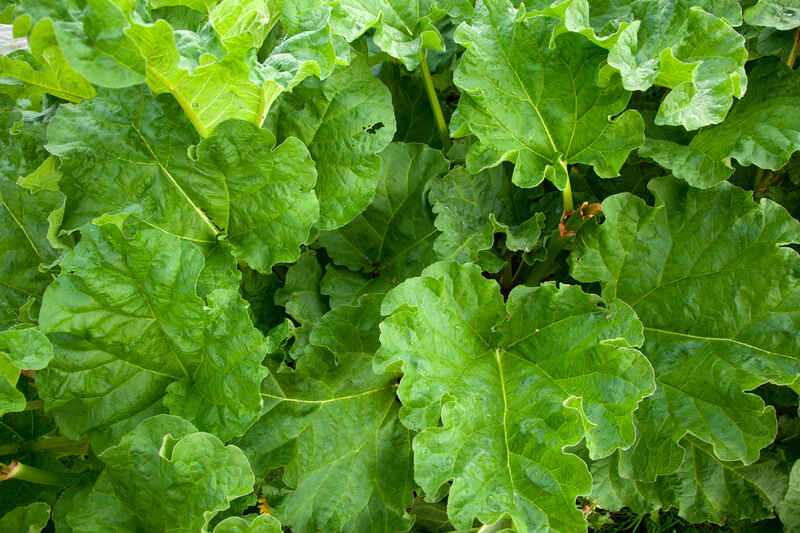
Yes, the plant you grow to make pie can make your dog sick. Typically only very toxic if eaten in large quantities, rhubarb contains anthraquinone glycosides, which act as laxatives to cause vomiting and diarrhea.
Another toxic ingredient is calcium oxalate, which can lead to kidney dysfunction.
Scientific name: Rheum rhabarbarum
Toxin(s): anthraquinone glycosides and soluble calcium oxalates
Examples of poisoning symptoms: kidney failure, tremors, excess salivation, vomiting
Plant alternatives: N/A
FAQ About Plants Poisonous to Dogs
According to the ASPCA, there are hundreds of plants poisonous to dogs. In addition to the list above, other toxic plants include:
• Crabapple trees
• Begonias
• Chamomile
• Geraniums
• Yuccas
• Irises
• Hosta
• Lavender
• Poinsettias
• St. John’s wort
It depends on the plant your dog eats. Some, like dumb cane may illicit an immediate response, as your pup will start to feel mouth irritation right away. Others, like rhododendrons may take a few hours for the onset of symptoms.
If you notice your dog acting strangely or vomiting, acting lethargic, or off-balance for no apparent reason, consult your veterinarian.
If you suspect your dog has eaten a poisonous plant, call the ASPCA’s poison control hotline or your local vet. Before calling or making the drive to the animal hospital, confirm the identity of the toxic plant you believe to have been ingested. This way, you’ll be able to provide as much information to the experts on the other line as possible.
Other than taking your dog to an emergency vet, the pros you called for help may also suggest:
• Inducing vomiting
• Giving your dog a bath for skin problems
When choosing dog-friendly plants for your garden, consider the following:
• Roses
• Coral bells
• Mint
• Sunflowers
• Some succulents
• Crape myrtle
• Forsythia
• Hibiscus
• Astilbe
• Basil
• Thyme
When to Hire a Professional Landscaper
Ready to revamp your entire yard to ensure only pet-friendly plants are included? Enlist the help of a local landscaping expert who can remove every poisonous plant from your space and assist in the selection of flowers, shrubs, ornamental grasses, and trees that won’t harm your dog in any way.
And, of course, a professional can help with standard lawn services, too. Further ensure the health of your dog, and the entire family, with regular lawn maintenance that can help reduce ticks, fleas, and other pests.
And are you curious if the same 28 plants poisonous to dogs could also be deadly to your cat or BFFs (best feline friends)? Check out our companion article detailing the 20 Plants Poisonous to Cats.
LawnStarter writer Andréa Butler contributed to this report.
Main Image Credit: Chrysanthemums are poisonous to dogs / Pxhere
